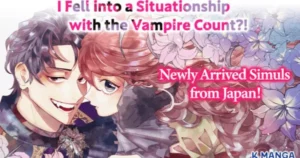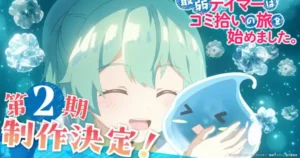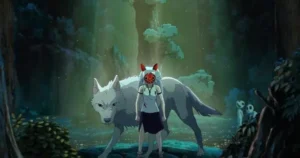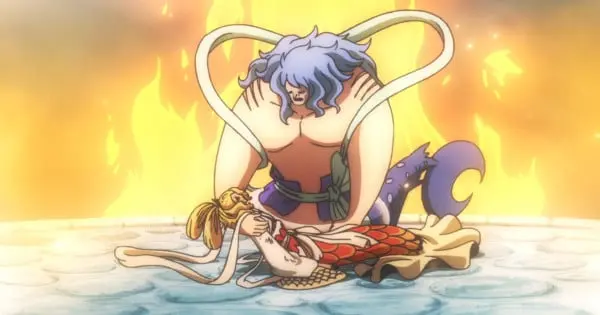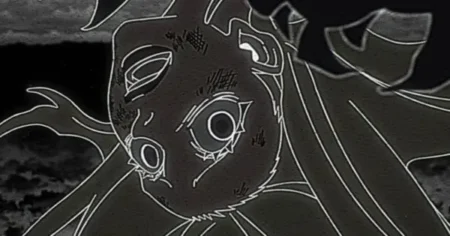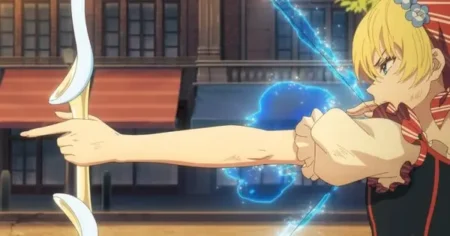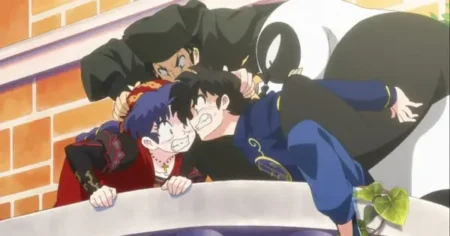The Straw Hat Pirates, fresh from their two-year training montage, plunge into the ocean’s depths and find themselves face-to-face with the complex and often turbulent society of Fish-Man Island. This arc, a critical juncture in Eiichiro Oda’s One Piece, is more than just an underwater adventure; it’s a deep exploration of racial prejudice, historical grievances, and the burden of prophecy.
Beneath the Surface: Unveiling Fish-Man Island
Fish-Man Island, a vibrant, underwater kingdom located beneath the Red Line, serves as a crucial gateway to the New World. Heavily inspired by the mythical city of Atlantis, the island is home to fish-men and merfolk, each naturally stronger than the average human. This unique location is sustained by sunlight filtered through a massive tree, echoing the Norse mythological Yggdrasil.
A Divided Society
The island’s beauty masks deep-seated tensions between fish-men and humans, stemming from centuries of slavery and discrimination. This historical trauma has created a breeding ground for resentment, manipulated by figures like Hordy Jones, who embodies the most extreme anti-human sentiments.
The Shadow of the Past: Racism and Prejudice
The Fish-Man Island arc directly tackles the issue of racism, a recurring theme in One Piece. The arc highlights the prejudice faced by fish-men at the hands of humans, a narrative that mirrors real-world instances of discrimination and social injustice.
Hordy Jones: A Symbol of Deep-Seated Hatred
Hordy Jones, the primary antagonist, represents the embodiment of this hatred. Fueled by historical grievances and a distorted sense of justice, Hordy seeks to overthrow the Ryugu Kingdom and establish fish-man supremacy, resorting to violence and extremism to achieve his goals. Despite his villainous role, Hordy’s motivations stem from the very real suffering experienced by fish-men, adding a layer of complexity to his character.
Nami’s Reconciliation
Interestingly, Nami, a core member of the Straw Hats, has her own past trauma connected to fish-men. Her village was terrorized by Arlong, a fish-man pirate, leaving her with deep-seated resentment. However, throughout the arc, Nami confronts her prejudices and ultimately forgives Jinbe and other fish-men, showcasing her capacity for growth and understanding.
Power Dynamics and Political Intrigue
The arc introduces the Ryugu Kingdom, ruled by the Neptune family. King Neptune, a benevolent ruler, strives for peace and coexistence between fish-men and humans. However, his pacifist approach is challenged by the growing radicalization of fish-man society, creating a power vacuum that Hordy Jones seeks to exploit.
Alliances and Betrayals
Amidst the chaos, alliances are forged and broken. Vander Decken, driven by his obsession with Princess Shirahoshi, joins forces with Hordy, further destabilizing the island. The arc explores the complexities of political maneuvering and the consequences of unchecked ambition.
The Prophecy and the Ancient Weapon
The Fish-Man Island arc introduces the concept of prophecy, adding a layer of intrigue to the overarching One Piece narrative. Madam Shyarly, a fortune teller, predicts the destruction of Fish-Man Island by Luffy, a revelation that casts a shadow over the Straw Hats’ presence.
Shirahoshi: The Ancient Weapon Poseidon
It is revealed that Princess Shirahoshi is the ancient weapon Poseidon, capable of controlling the Sea Kings, massive sea creatures of immense power. This revelation elevates Shirahoshi’s importance, making her a target for those seeking to control the world’s oceans.
Joy Boy’s Promise
The arc also unveils the story of Joy Boy, a mysterious figure from the Void Century who made a promise to the Fish-Man Island. The promise remains unfulfilled, adding another layer of historical significance and setting the stage for future events in the One Piece storyline.
The Straw Hats’ Growth and Resolve
Having undergone rigorous training, the Straw Hats demonstrate their enhanced abilities throughout the arc. The battles against Hordy Jones and his New Fish-Man Pirates serve as a showcase of their strength and teamwork. However, the arc also highlights their unwavering commitment to protecting the innocent and upholding justice.
Luffy’s Determination
Luffy, as always, remains steadfast in his pursuit of freedom and his unwavering belief in his friends. He confronts Hordy Jones not only to protect Fish-Man Island but also to challenge the cycle of hatred and prejudice that threatens to consume it. Luffy’s actions embody the theme of hope and the possibility of a brighter future.
Themes and Cultural Influences
The Fish-Man Island arc is rich in themes and cultural influences, drawing inspiration from various sources to create a compelling and thought-provoking narrative.
Atlantis
The island itself draws heavy inspiration from the mythical city of Atlantis, an underwater kingdom lost to time. The architecture, technology, and overall aesthetic of Fish-Man Island reflect this influence, creating a visually stunning and immersive setting.
Mythology
The arc incorporates elements of Norse mythology, with the Sun Tree mirroring Yggdrasil, the world tree that connects the realms. This mythological reference adds depth and symbolism to the island’s environment, enriching the world-building.
Social Commentary
Beyond its fantastical elements, the Fish-Man Island arc offers a powerful commentary on social issues such as racism, discrimination, and the legacy of slavery. By exploring these themes through the lens of a fictional world, Oda encourages viewers to reflect on real-world injustices and the importance of empathy and understanding.
Controversies and Criticisms
Despite its strengths, the Fish-Man Island arc has faced criticism from some fans, who find it to be one of the weaker arcs in the series. Some common criticisms include:
Weak Antagonist
Hordy Jones is often criticized for being a shallow and uninspiring villain, lacking the depth and charisma of previous antagonists. His motivations, while rooted in the historical suffering of fish-men, are seen as simplistic and his actions overly violent.
Pacing Issues
The arc’s pacing is another common point of criticism, with some viewers finding it to be slow and drawn out, especially in the anime adaptation. The extended flashbacks and lengthy battles contribute to the perception of sluggish pacing.
Lack of Tension
Some viewers argue that the Straw Hats’ overwhelming strength after the time skip diminishes the sense of tension and danger in the battles against Hordy Jones and his crew. The outcome of the fights feels predetermined, reducing the stakes and excitement.
Legacy and Impact
Despite its criticisms, the Fish-Man Island arc remains a significant part of the One Piece narrative, laying the groundwork for future storylines and exploring important themes.
Introduction of Key Concepts
The arc introduces several key concepts that become central to the overall One Piece story, including the prophecy of Fish-Man Island’s destruction, the ancient weapon Poseidon, and the figure of Joy Boy. These elements add depth and complexity to the world-building, setting the stage for future revelations and conflicts.
Character Development
The arc contributes to the development of several key characters, particularly Nami, who confronts her past trauma and learns to forgive. The arc also deepens the relationship between Luffy and Jinbe, paving the way for Jinbe’s eventual加入to the Straw Hat Pirates.
World-Building
Oda’s world-building is one of the strongest aspects of One Piece, with the Fish-Man Island arc adding significant depth to the series’ lore. The arc delves into the history of fish-men and humans, explores the unique culture of Fish-Man Island, and introduces new political factions and power dynamics.
One Piece Log: Fish-Man Island Saga
To address some of the criticisms leveled against the original adaptation, Toei Animation has released “One Piece Log: Fish-Man Island Saga,” a remastered and abridged version of the arc. This version condenses the story into 21 episodes with enhanced visuals and updated opening and ending themes. The goal is to improve the pacing and overall viewing experience, making the arc more accessible to new viewers and more enjoyable for long-time fans.
Conclusion: A Necessary Chapter
The Fish-Man Island arc in One Piece is a complex and multifaceted story that delves into themes of racism, prejudice, power, and prophecy. While it has faced criticism for its pacing and antagonist, the arc remains a crucial chapter in the One Piece saga, laying the groundwork for future storylines and exploring important social issues. Through its vibrant underwater setting and its exploration of complex characters, the Fish-Man Island arc offers a thought-provoking and engaging experience for viewers.

